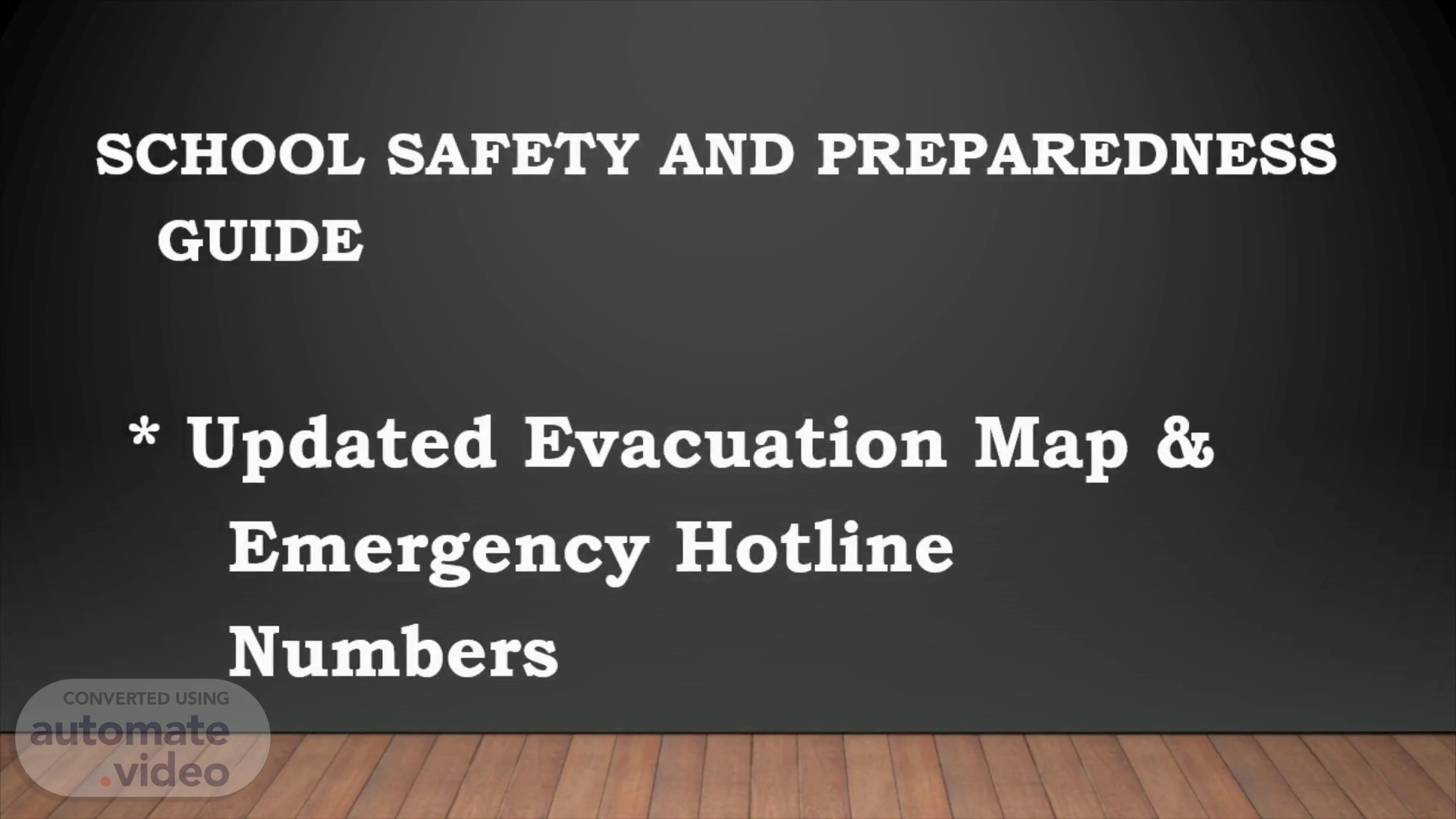
Page 1 (0s)
[Audio] SCHOOL SAFETY AND PREPAREDNESS GUIDE * Updated Evacuation Map & Emergency Hotline Numbers.
Page 2 (11s)
[Audio] BRIGADA ESKWELA SCHOOL SAFETY AND PREPAREDNESS GUIDE In view of the implementation of the 2022 Brigada Eskwela and the preparation of the face-to-face classes, this School Safety and Preparedness Guide is issued to provide guidance to schools and education partners in ensuring safety and preparedness of our learners and personnel before, during and after emergencies a. The CSS framework is intended to advance the goals of the Worldwide Initiative for Safe Schools and the Global Alliance for Disaster Risk Reduction and Resilience in the Education Sector, and to promote school safety as a priority area of post- 2015 frameworks for sustainable development, risk reduction and resilience. b. Comprehensive school safety is addressed by education policy and practices aligned with disaster management at national, regional, district, and local school site levels. It rests on three pillars: 1. Safe Learning Facilities -involves education authorities, planners, architects, engineers, builders, and school community members in safe site selection, design, construction and maintenance. Includes structural and non-structural components (e.g. building codes). 2. School Disaster Management -established via national and sub-national education authorities and local school communities (including children and parents), working in collaboration with their disaster management counterparts at each jurisdiction, in order to maintain safe learning environments and plan for educational continuity, conforming to international standards 3. Risk Reduction and Resilience Education - designed to develop a culture of safety and resilient communities..
Page 3 (2m 9s)
[Audio] Comprehensive School Safety Pillar 1: SAFE LEARNING FACILITIES Facilitate the assessment of school building structure and electrical wiring and make necessary repairs and/or upgrades to prevent unnecessary incidents. Repair minor classroom damages such as broken windows, doors, blackboard, roofs and other furniture, etc. Install appropriate and available fire suppression, including fire extinguishers, water source and relevant indigenous materials. Ensure that corridors and pathways are unobstructed and that all sharp, protruding objects which may cause harm to learners are removed. Clean and clear drainage to prevent clogging. Cover drainage canals and provide necessary warnings. Cordon off and post safety signage for on-going construction, unfinished, damaged and condemned buildings. Secure cabinets and drawers and ensure that heavy objects are below head level. Post safety measures to be observed in laboratories, workshops, and other facilities requiring the same. Prepare an evacuation/ exit plan and post directional signage on every floor of the building. Identify evacuation areas and classrooms that may be used as temporary shelters during disasters and emergencies. Prune trees to avoid entanglement from electrical wirings and avoid potential harm to life and property..
Page 4 (3m 45s)
[Audio] Comprehensive School Safety Pillar 2: SCHOOL DISASTER MANAGEMENT Post a directory of emergency contact numbers of relevant government agencies and officers in various high traffic areas of the school. Establish and maintain early warning mechanisms in the school. Equip school with first aid kits, flashlights, megaphones, and other supplies necessary in cases of emergency. Ensure that these items are highly accessible and can be easily located. Identify alternative sources and/or maintain supply of drinking water within the school. Ensure that learners, teachers, and personnel have identification cards with relevant information. Create database of learners with the contact details of their immediate family members/ relatives/ guardians. Secure and safely store vital school records. Coordinate with barangay officials on pedestrian safety of learners. Document accidents experienced by learners and personnel within the school to improve prevention and mitigation measures..
Page 5 (4m 58s)
[Audio] Comprehensive School Safety Pillar 3: RISK REDUCTION AND RESILIENCE EDUCATION Identify a storage area for safekeeping of vital schools' records, textbooks, teaching manuals, computers, and other school equipment..